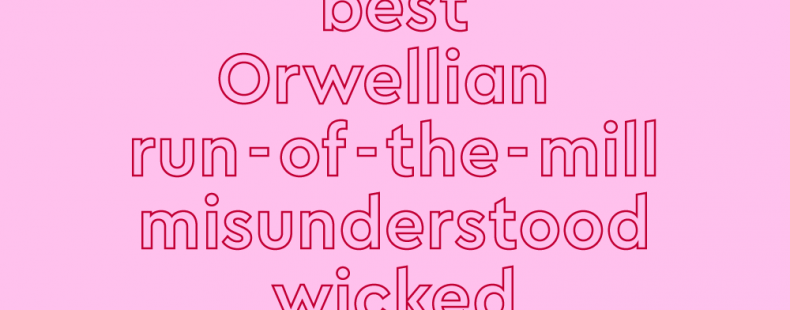Adjectives are words that modify nouns and pronouns. There are 13 different categories of adjectives that describe the many different ways adjectives can be used in the English language. We have grammar guides to help you understand the difference between these, including 13 Types Of Adjectives And How To Use Them. Here we’ll focus on lists of these adjectives and quick tips on using them. And don’t forget: because we’re the Thesaurus.com, if you click on each adjective, you’ll get dozens more! (Score!)
Descriptive adjectives
One of the broadest categories of adjectives is descriptive adjectives. Descriptive adjectives are adjectives that describe the characteristics, traits, or qualities of a noun or pronoun. In English, descriptive adjectives often are placed directly before the noun they are describing. For example: Excited children ate delicious treats in the colorful cafeteria.
Examples of descriptive adjectives:
- beautiful
- witty
- wicked
- confusing
- rich
- new
- strange
- rocky
- circular
- helpful
- competent
- smelly
- stable
- grumpy
- devoted
- smart
- muscular
- graceful
- scary
- safe
- wooden
- sleepy
- tardy
- hungry
- strange
- hopeful
- proud
- new
- dainty
- royal
- arrogant
- round
- efficient
- youthful
- cumbersome
- fickle
- mild
- expensive
- small
- rude
- generous
- courageous
- zany
- thin
- round
- oval
- dark
- hot
- modern
- petite
- weary
Let’s review lists of other types of adjectives.
Compound adjectives
Compound adjectives are adjectives that are formed from multiple words, which are usually connected by hyphens. For example: We all enjoyed some ice-cold sodas.
Examples of compound adjectives:
- old-fashioned
- run-of-the-mill
- middle-of-the-road
- heavy-duty
- happy-go-lucky
- see-through
- easy-going
- big-time
- long-term
Comparative adjectives
Comparative adjectives are used to compare two different people or things to each other. Most comparative adjectives in English end in -er. In other instances, they are denoted with more. For example: My brother is stronger than yours.
Examples of comparative adjectives:
Superlative adjectives
Superlative adjectives are used to compare more than two people or things by indicating which one is the most supreme or extreme. Most superlative adjectives in English end in -est. In other instances, they are denoted with most or least. For example: I thought she was the most creative artist on the planet.
Examples of superlative adjectives:
Proper adjectives
Proper adjectives are adjectives formed from proper nouns. For example: At the grocery store, we bought Mexican tortillas, German sausage, and French cheese.
There are some proper adjectives that are based on people and places that may not be capitalized if they are used as more general words, such as herculean. (These are the adjectives you’re most likely to find in Thesaurus.com.)
Examples of proper adjectives:
Participial adjectives
Participial adjectives are adjectives that are based on participles, which are words that usually end in -ed or -ing and derive from verbs. For example: The frightened students ran away from the terrifying clown.
Examples of participial adjectives:
Distributive adjectives
Distributive adjectives are used to refer to members of a group individually. For example: Both of the team captains took the time to congratulate every member of the team.
Examples of distributive adjectives:
Limiting adjectives
Limiting adjectives are adjectives that restrict a noun or pronoun rather than describe any of its characteristics or qualities. For example: The building had twelve floors, hundreds of windows, and several unique features.
Examples of limiting adjectives:
Possessive adjectives
Possessive adjectives are used to express possession or ownership. For example: Everyone brought their own dish and my mom made her famous punch for our potluck.
Examples of possessive adjectives:
Interrogative adjectives
Some categories of adjectives are more limited. There are only three interrogative adjectives in English. They are used to ask questions. For example: What is the fastest way to get this done?
The three interrogative adjectives are:
- what
- which
- whose
Demonstrative adjectives
Demonstrative adjectives are used to express relative positions in space and time. For example: I think that color looks great on you, but this one matches those shoes better.
The four most commonly used demonstrative adjectives in English are:
Finally, adjectives can be in different categories depending on how they are used in a sentence. Let’s briefly look at these.
Attributive adjectives
Many descriptive adjectives are commonly used as attributive adjectives. Attributive adjectives are adjectives that are usually directly next to the noun and pronoun that they modify.
These sentences all use attributive adjectives:
- The sleepy dogs dozed on the doorstep.
- A tardy student ran in as the bell rang.
- We fed the hungry cat.
- The strange figures appeared in the mist.
- Her hopeful eyes gazed at me.
Predicate adjectives
Some of the same descriptive adjectives that were used as attributive adjectives above can also be used as predicate adjectives. Predicate adjectives are adjectives that appear in the predicate of a sentence as a subject complement rather than directly next to the nouns or pronouns that they modify. Predicate adjectives follow linking verbs in sentences and clauses.
These sentences all use predicate adjectives:
- They are asleep.
- I arrived late to work.
- She felt hungry.
- The figures seemed strange.
- The children looked hopeful.
How well do you know adjectives?
Can you tell your limiting adjectives from your possessive adjectives? Do you know what the difference is between a predicate adjective and a participial one? You can test your adjectival knowledge with our quick, fun, challenging adjective quiz here. To review these adjectives in one list, click on this list: All Types Of Adjectives To Spark Your Creativity. You’ll find flash cards and quizzes here too.














